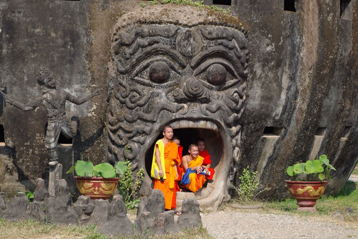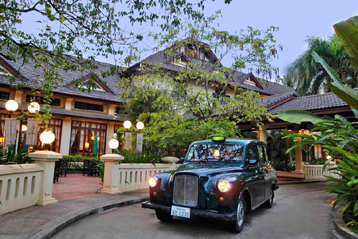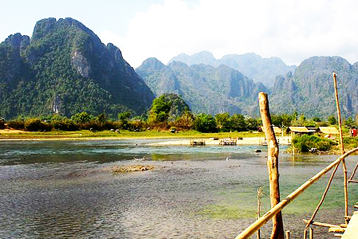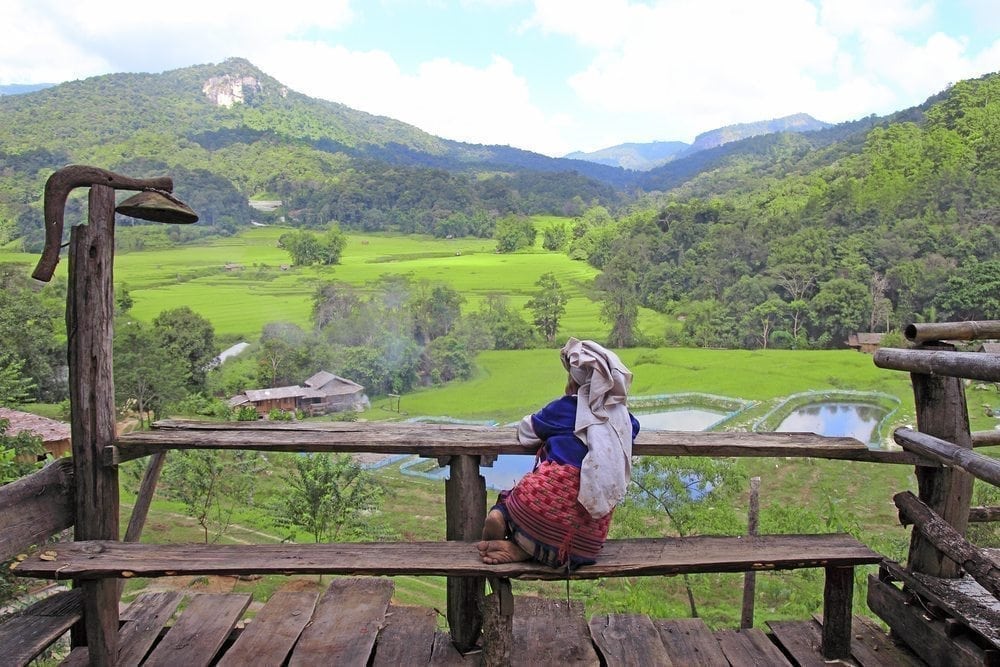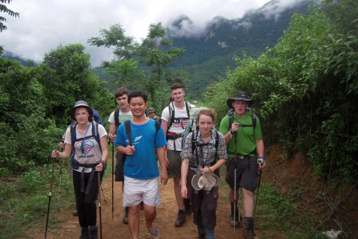Shopping in Laos
Shopping in Laos is improving fast. The growth in tourist numbers has been matched, if not exceeded, by the number of stores flogging fabrics, handicrafts and regional favorites from Vietnam and Thailand. Vientiane and Luang Prabang are the main shopping centers and in these cities it’s easiest to compare quality and price. It is, however, always nice to buy direct from the producer, and in many villages that’s possible.
There is a total ban on the export of antiques and Buddha images from Laos, though the enforcement of this ban is slack.
Bargaining
Bargaining is a tradition introduced by early Arab and Indian traders; however, in most places in Laos it’s not nearly as aggressive as in other parts of Southeast Asia. Good bargaining, which takes practice, is one way to cut costs. Most things bought in a market should be bargained for and it can’t hurt to try in a hop, though increasingly prices are fixed.
In general the Lao are gentle and very scrupulous in their bargaining practices. A fair price is usually arrived at quickly with .little attempt to gouge the buyer (tour operators may be an exception to this rule ) The amount they come down is usually less than what you see in neighboring countries. Laos definitely has a “two-tier pricing system” when it conies to quoting prices to foreigners, but it’s nowhere near as evident as in Vietnam.
What is really important here is to remember that a good bargain is where both the buyer and the vendor end up happy. By all means try to get a fair price. But if you find yourself getting hot under the collar over 1000 kip (about US$10). It’s time to take a reality check. In this instance both you and the seller lose lace and everyone ends up unhappy. In a country as cheap as Laos, it’s just not worth it.
Antiques
Vientiane, Luang Prabang and Savanakhet each have a sprinkling of antique. Anything that looks old could be up for sale in these shops, including Asian pottery (especially porcelain from the Ming dynasty of China), old jewellery, clothes carved wood, musical instruments, and bronze statuettes. Because of the government’s lax enforcement of the ban on the export of antiques, due to an overall I funds and personnel, you might be tempted to buy these objects. However, bear in mind not only that it is illegal to take them out of the country out but that if you do so, you will be robbing the country or its precious and limited heritage. For more on the flight against antiquity theft in Southeast Asia, see www.neritagewatch.org.
Carvings
The Lao produce well-crafted wood, bone and stone. Subjects include anything from Hindu or Buddhist mythology to themes from everyday life. Authentic opium pipes can be found, especially in the north, and sometimes have intricately carved bone or bamboo shafts, along with engraved ceramic bowls. The selection, though, get smaller every year.
Fabric
Textiles are among the most beautiful, most recognizable and easiest items to buy while you are in Laos.
Silk and cotton fabrics are woven in many different style according to the geographic provenance and ethnicity of the weavers. Although Lao textiles do have similarities with other Southeast Asian textiles, Lao weaving techniques are unique in both loom design weaving styles, generating fabrics that recognizably Lao.
Generally speaking, the fabrics of the north feature of solid colors with complex geometric patterns- stripes, diamonds, zigzags, animal and plant shapes – Another form the cloth likes is phaa biang a narrow shawl that men and women wear singly or in pairs over the shoulders during wedding and festivals.
The southern marked by the mat-mii technique, which involves “tie-dyeing” the threads before weaving. The result is a soft, spotted pattern similar to Indonesian ikat. Mat-mii cloth can be used for different of clothing or for wall-hangings. Among Lao Thoeng and Mon-Khmer communities in the southern provinces there is a mat- mii weaving tradition which features lie story lines, sometimes with a few Khmer words, numerals or other non- representational symbols woven into the pattern.
Many tribes among the Lao Soung and Lao Thoeng produce woven shoulder bags in the Thai and Tibetan-Burmese traditions, like those seen all across the mountains of south Asia and Southeast Asia. In Laos, these are called nyaam. Among the most popular nyaam nowadays are those made with older pieces of fabric from “antique” phaa nung or from pieces of hill-tribe clothing. Vientiane’s Talat Sao is one of the best places to shop for this kind of accessory.
The best place to buy fabric is in the weaving villages themselves, where you can watch how it’s made and get “wholesale” prices. Failing this, you can find a decent selection and reasonable prices at open markets in provincial towns, including Vientiane’s Talat Sao. Tailor shops and handicraft stores generally charge more and quality is variable. In Vientiane and Luang Prabang several stores are dedicated to high-quality textiles, with high prices to match.
Jewellery
Gold and silver jewellery are good buys in Laos, although you must search hard for well-made pieces. Some of the best silverwork is done by the hill tribes. Gems are also some-times available, but you can get better prices in Thailand.
More guide...
Responsible Travel
Being a responsible eco tour operator is at the heart of what ACTIVETRAVEL ASIA is all about. From the start, we have been committed to offering low-impact tours that benefit traveler and host alike. We work with local communities, businesses and individuals to develop sustainable tourism opportunities that help local economies while minimizing negative environmental and cultural impacts.
Asia Travel News


